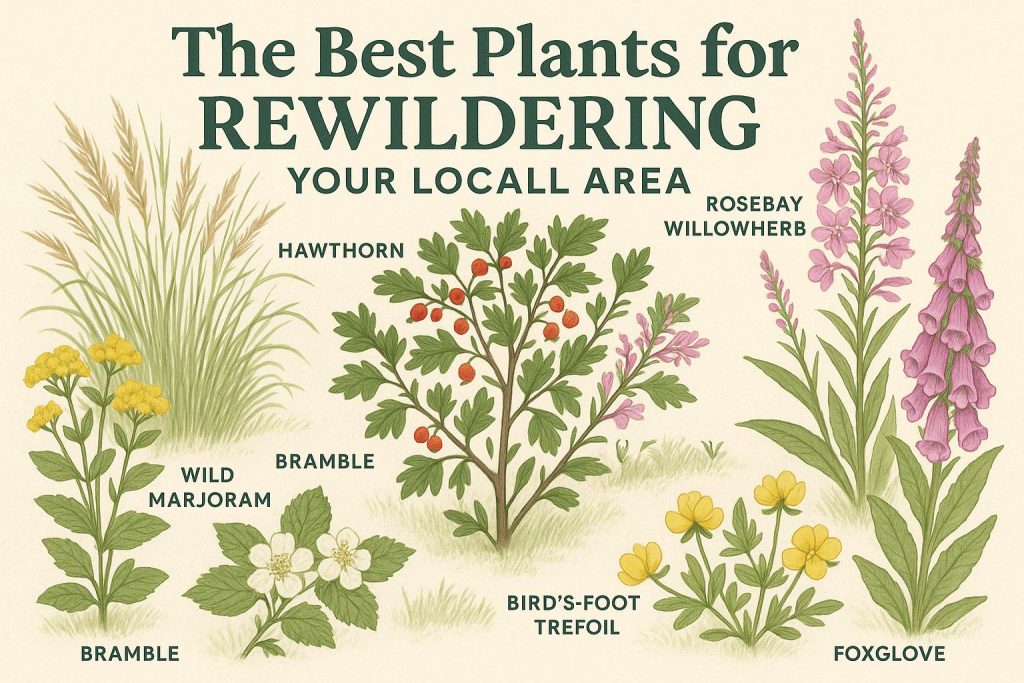
The Best Plants for Rewildering Your Local Area
Introduction to Rewilding
Rewilding represents a significant shift in ecological thinking, emphasizing the importance of allowing ecosystems to develop naturally and autonomously. The practice of rewilding not only aims to restore natural habitats but also to bolster biodiversity by reintroducing keystone species that play critical roles in maintaining the ecological balance. Although these large-scale efforts often dominate the conversation, individual actions can make a meaningful impact in the rewilding movement. Planting native flora in local gardens and community areas provides an opportunity for individuals to contribute positively to their immediate environment, supporting the local wildlife and the ecosystem at large.
Benefits of Native Plants
The use of native plants in rewilding is pivotal due to their natural occurrence and adaptation over time to specific regions. This adaptation means they are well-suited to thrive in local conditions, making them indispensable to the restoration process. The benefits of incorporating native plants into rewilding efforts are multifaceted and substantial:
Support for Local Wildlife: Native plants serve as essential resources for local wildlife, offering both sustenance and habitat. They support a wide range of organisms, from small insects to larger mammals, thereby ensuring a stable and diverse ecosystem. Due to their intimate relationship developed over centuries with indigenous wildlife, native plants often play critical roles in food chains and habitat structures.
Adapted to Local Conditions: Another distinct advantage of native plants is their adaptation to local soil, climate, and environmental conditions. This inherent adaptability means native plants require fewer artificial inputs such as fertilizers and pesticides, which are often necessary for non-native species. Consequently, nurturing native plants not only supports the environment but also results in lower maintenance efforts and costs.
Promotion of Biodiversity: Establishing a diverse array of native plants contributes significantly to ecological resilience. A varied plant ecosystem supports a broader spectrum of wildlife and provides greater resistance to pest invasions, diseases, and climatic fluctuations. By fostering biodiversity, ecosystems become more adept at withstanding and recovering from environmental challenges, contributing to a healthier planet.
Best Native Plants for Rewilding by Region
While the benefits of native plants are undeniable, selecting the appropriate species can be dependent on geographic and climatic considerations. Here is an exploration of some of the best native plants fit for rewilding efforts across different parts of the world.
North America
In North America, native species like those listed below are integral to local ecosystems:
Milkweed (Asclepias spp.): As a crucial plant for monarch butterflies, milkweed not only supports this iconic species but also provides resources for a range of pollinators, making it a staple for rewilding projects.
Eastern Red Columbine (Aquilegia canadensis): Valued for its vibrant blooms, Eastern Red Columbine is particularly attractive to hummingbirds and bees. Its culinary allure lies in its timing, flowering in the spring when other flowers are scarce.
Prairie Dropseed (Sporobolus heterolepis): This plant provides excellent ground cover and seeds that are a source of nourishment for various wildlife species, contributing significantly to habitat diversity.
Europe
European rewilding initiatives benefit immensely from the following native species:
Hawthorn (Crataegus monogyna): Offering an abundance of berries, Hawthorn supports bird species while its dense branches provide shelter for insects and small mammals.
White Clover (Trifolium repens): Not only does White Clover enrich the soil through nitrogen fixation, but it is also popular among bees and other pollinators, further contributing to ecosystem health.
Yarrow (Achillea millefolium): With its wide array of supported insect life, Yarrow is a valuable addition to any rewilding effort and is renowned for its utility in traditional medicine.
Australia
Australia’s unique landscapes are best supported by native species such as:
Kangaroo Grass (Themeda triandra): Resilient and versatile, this grass supports a range of wildlife including seed-eating birds. Its hardiness makes it an essential part of the landscape.
Wattle (Acacia spp.): With a significant role in pollination, Wattles are foundational to Australia’s ecosystems, offering habitats that support numerous species.
Pigface (Carpobrotus rossii): Particularly adept at thriving in coastal areas, Pigface provides vibrant flowers utilized by bees and other pollinators.
Additional Considerations
Engaging effectively in rewilding requires careful preparation and localized understanding. Consulting regional guidelines ensures the selection of compatible and ecologically valuable plants. Partnering with community groups and leveraging expert resources can enhance the success and scalability of rewilding initiatives. Accessible resources to assist in these efforts include organizations such as the National Wildlife Federation and regional plant guides that can offer tailored advice and support.
Conclusion
To sum up, rewilding through the incorporation of native plants offers a pragmatic pathway to enrich local ecosystems and bolster biodiversity. By understanding and addressing specific regional needs, individuals and communities can exert a positive influence on their surroundings. Bringing balance back to nature not only supports local ecology but also facilitates a sustainable environmental legacy for future generations.